The fascinating solar system: planets, comets and missions in detail!
Discover the solar system in this comprehensive treatise: from the sun to all planets to comets and future missions.
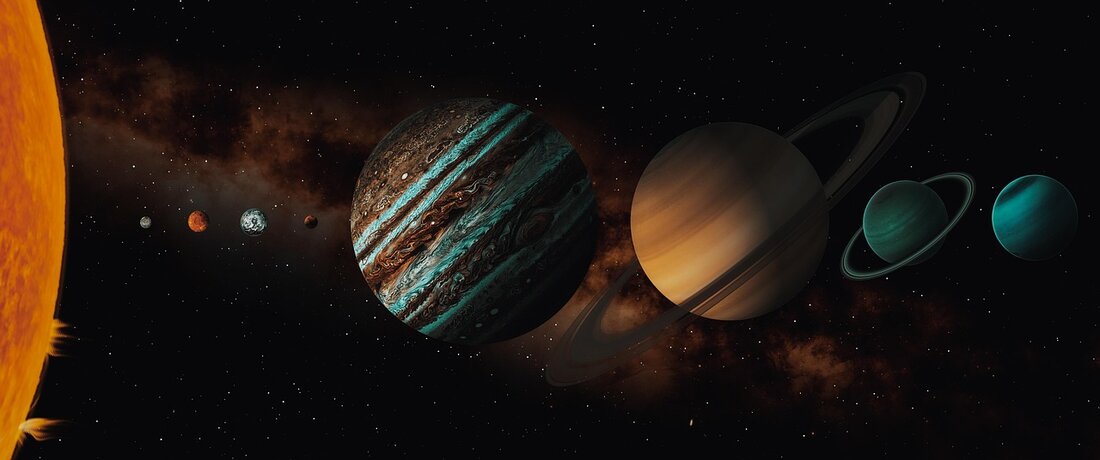
The fascinating solar system: planets, comets and missions in detail!
Our solar system is a fascinating cosmic structure that has aroused human curiosity for thousands of years. It consists of the sun, a medium -sized star in the center, as well as a variety of sky bodies that are trapped in their orbit - including planets, moons, asteroids and comets. This system, which was created about 4.6 billion years ago from a huge gas and dust cloud, offers insights into the origin and development of worlds that appear both familiar and strange. Researching the solar system has not only expanded our understanding of space, but also raised fundamental questions about the emergence of life and the future of humanity. This article offers a comprehensive overview of the structure and the diverse components of our cosmic home, illuminates the unique properties of the individual celestial body and the scientific knowledge they provide to us.
Introduction to the solar system
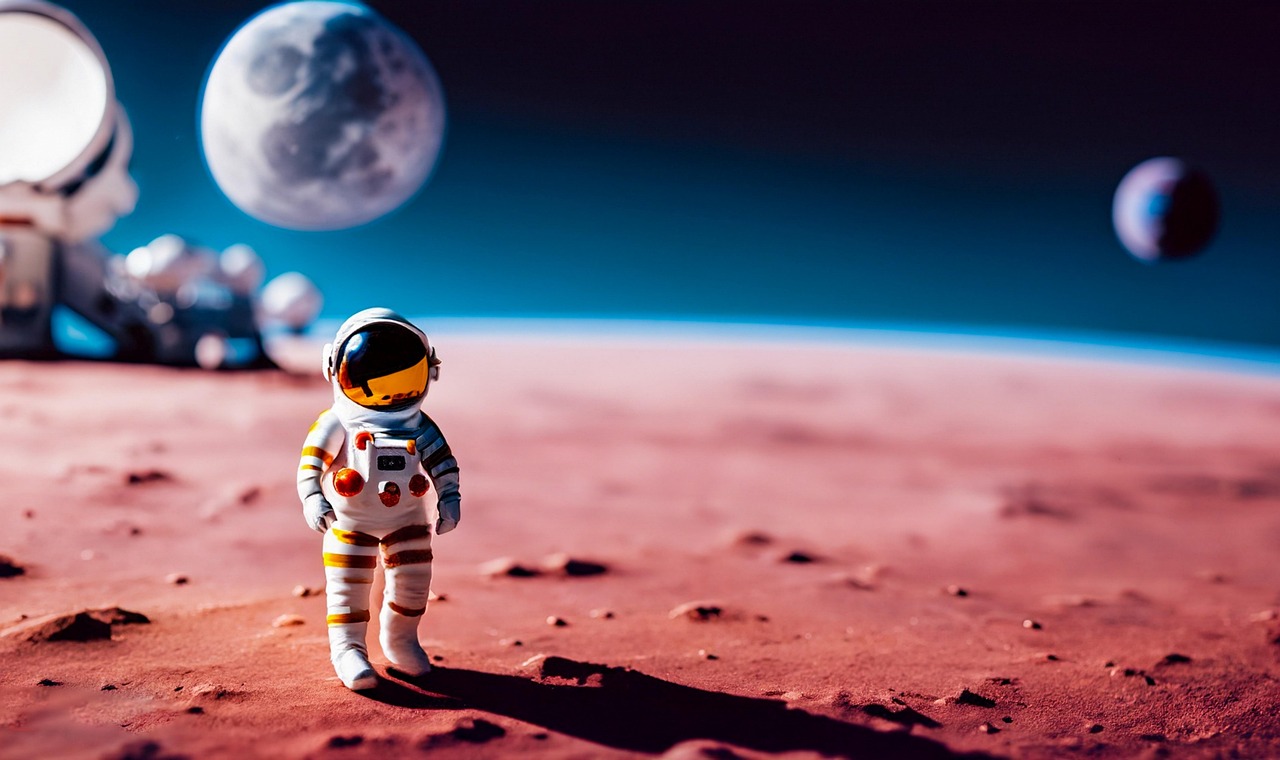
Our solar system is a complex and dynamic planetary system in which the earth is located. It consists of the sun, a medium -sized star that is about 99.86 % of the total mass of the system, as well as eight planets, their natural satellites (moons), dwarf planets, asteroids, comets and meteoroids. The planets, seen in their order from the sun, are Mercury, Venus, Earth, Mars, Jupiter, Saturn, Uranus and Neptune. Pluto, once classified as a ninth planet, has been a dwarf planet since 2006 and is located in the Kuiper belt, a region beyond Neptune, which contains other dwarf planets such as Eris, Haumea and Makemake. The sun is located in the orion arm of the Milky Way, about 27,000 light years from the Galactic Center, during the sunny star, proxima Centauri, is about 4.22 light years away. The outer border of the solar system is defined by the hypothetical oortsche cloud, which could extend from the sun for up to 1.5 light years, as in detailed descriptions Wikipedia is explained.
The planets move around the sun in an almost flat disc, with a maximum rail tendency of about 7 °. The inner planets- Mercury, Venus, Earth and Mars- are rock planets, while the outer planets- Jupiter, Saturn, Uranus and Neptune- are known as gas and ice giants. Each planet has its own moons, with the earth (the moon), Mars two (Phobos and Deimos), Jupiter four large (IO, Europe, Ganymede, Kallisto) and Saturn also has numerous, including Titan. The asteroid belt, a region with countless small planets or asteroids, of which Ceres is the largest is the largest between Mars and Jupiter. These rock and metal chunks circle around the sun on regular lanes, but can collide, which creates debris that fly through the solar system. Some of these fragments come close to the earth and drop out as meteorites, whereby they often become visible as shooting stars when entering the atmosphere.
Most meteorites are small and burn up completely in the atmosphere, but larger specimens reach the ground and can cause significant impacts. The largest known meteor impact occurred about 65 million years ago, when an object several kilometers across left a 180-kilometer crater. This impact caused the sun to be obscured for centuries by blowing up dust, resulting in the extinction of many plants and animals, including dinosaurs. Fortunately, such large impacts are rare, and modern telescopes allow early detection of potentially dangerous objects. In addition to asteroids and meteoroids, there are also comets, often called “dirty snowballs,” which are made of ice and dust and come from the outer regions of the solar system. As they approach the sun, they thaw, form a vapor envelope, and the solar wind blows it up into a characteristic tail, which disappears again as it moves away from the sun Planet school is described.
The history of the solar system dates back about 4.5682 billion years and is explained by the Kant’s nebular hypothesis. This states that the solar system was created from a huge, rotating cloud of gas and dust, which contracted under its own gravity. The sun was formed in the middle of this cloud, while the planets were created in the surrounding protoplanetary disc due to the coagulation of planetesimal- small rock and dust particles. The inner regions of the disc, where the temperatures were higher, favor the formation of rocks, while gas and ice giants were created in the colder external areas. Open questions about the development of planets concern, among other things, the distribution of the rotary impulse and the inclination of the Equator level of the sun in relation to the rail level of the planets. These processes illustrate the complex dynamics that led to the development of a system that includes both orderly structures and chaotic elements such as asteroids and comets.
In summary, the solar system is an impressive example of the variety and dynamics of cosmic structures. From the dominant sun to the different planets and moons to the countless smaller objects such as asteroids and comets, it offers a wealth of phenomena that scientists have researched for centuries. The history of the system shows how an orderly, if not static, structure has arisen from a chaotic cloud, which is still being developed by collisions, rail disorders and other processes.
The sun
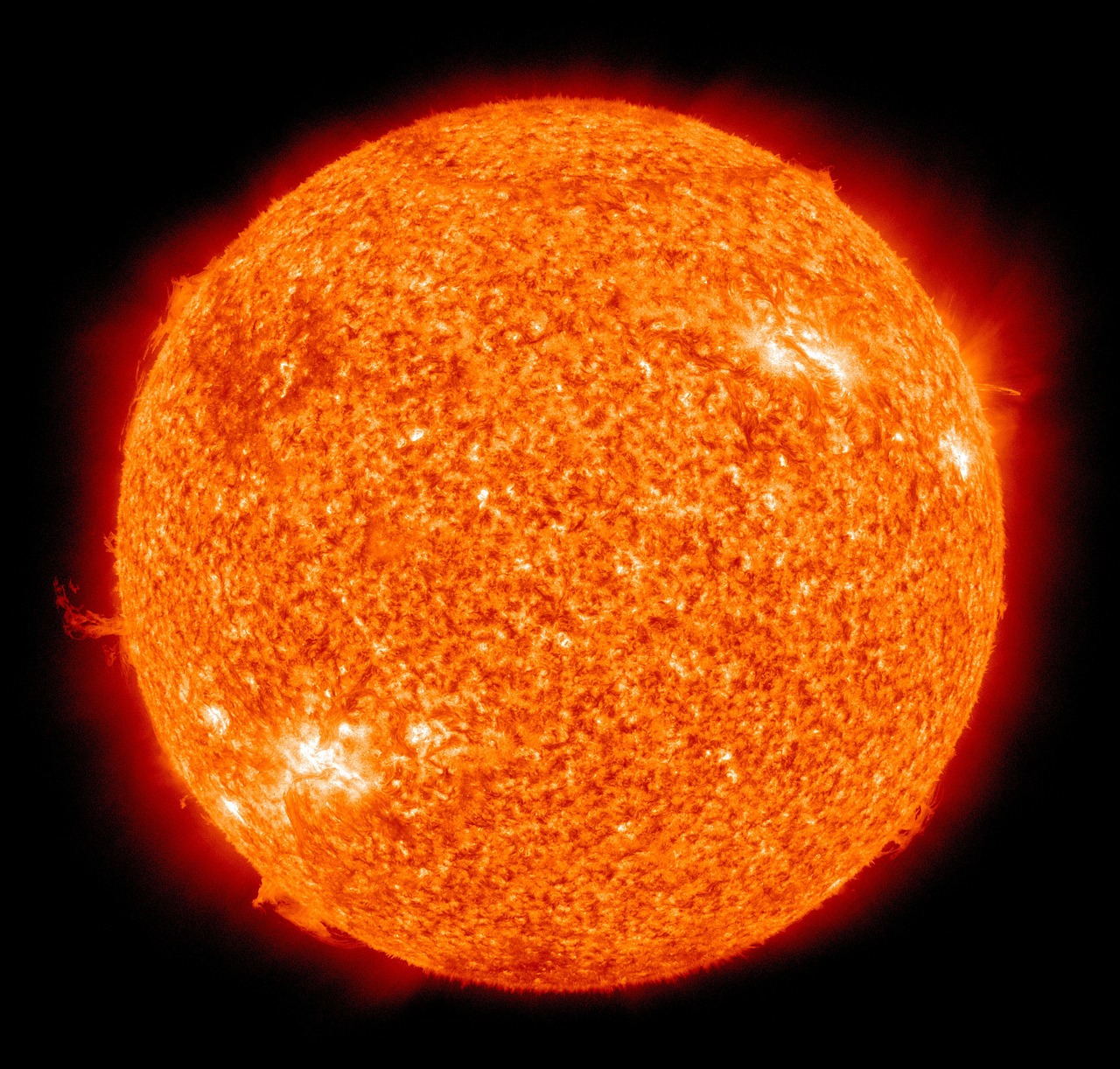
The sun, the central star of our solar system, is a medium -sized star of the spectral class G2V, which is about 99.86 % of the total mass of the system. It is located in the Orion arm of the Milky Way, around 27,000 light years from the galactic center, and is the engine that drives life on earth and the dynamics of the planets. With a diameter of around 1.39 million kilometers, it is rather modest compared to other stars in the universe-there are stars such as Vyis Majoris that are larger a billion times, or V766 Centaurii, the diameter of which is 1.300 times larger than that of the sun Franz-Plötz.de is described. Nevertheless, the sun is of incomparable importance for our solar system, since it represents the energy source for almost all processes on the planet.
The sun mainly consists of hydrogen (about 73.5 %) and helium (about 24.9 %), with traces of heavier elements. Their interior is divided into several layers: the core, the radiation zone, the convection zone and the outer layers such as the photosphal, chromosphere and corona. At its core, where temperatures of around 15 million degrees Celsius rule, energy generation through nuclear fusion takes place. Hydrogen kernels merge into helium, which releases enormous amounts of energy in the form of electromagnetic radiation, in particular visible light and heat. This process, which is made possible by the immense gravity of the sun, not only drives life on earth, but also influences the physical conditions on all planets of the solar system.
The energy of the sun reaches the planets in the form of solar radiation, with the intensity decreasing with the distance. For the inner rock planets such as Mercury, Venus, Earth and Mars, the solar radiation is crucial for the surface temperatures and climatic conditions. Mercury, the sunnyest planet, learns extreme temperature fluctuations due to the intensive radiation and a lack of atmosphere, while the dense atmosphere of Venus creates a greenhouse effect that heats the surface to over 460 degrees Celsius. On Earth, solar energy ensures balance, allows life by driving the water cycle and promoting photosynthesis in plants. Even the outer gas giants such as Jupiter and Saturn, which are far from the sun, are influenced by the solar radiation, even if they also have internal heat sources.
In addition to the radiation, the sun has a dominant influence on the planetary railways due to its gravity. It holds the planets, moons, asteroids and comets in their orbits and determines the structure of the solar system as almost flat disc. In addition, the sun wind - a current invited particle that runs out of the Korona of the sun - influences the magnetic fields and atmospheres of the planets. On Earth, the magnetic field protects against the harmful effects of the solar wind, while it has led to the erosion of the atmosphere on planets such as Mars, which do not have a strong magnetic field. Phenomena such as solar spots, solar eruptions and coronal mass pollution can also trigger geomagnetic storms on earth that affect communication systems and satellites.
The sun is about 4.6 billion years old and is located in the so -called main series phase of her life cycle, in which it merged with hydrogen into helium. In about 5 billion years, she will have exhausted her hydrogen supply and expand into a red giant, whereby it could possibly devour the inner planets, including the earth. Then she will repel her outer layers and remain as a white dwarf. Compared to masser stars, which can explode as supernovae and can form black holes, the sun will take a comparatively quiet end. Nevertheless, the comparison with other stars shows how diverse the development paths in the universe are - while our sun is stable and lifelong, other, far larger stars in catastrophic explosions could end.
In summary, the sun is not only the energetic and gravitational center of our solar system, but also a key to understanding stellar processes. Their characteristics, from nuclear fusion to the sun wind, shape the conditions on the planets and influence their history of development. Researching the sun therefore not only provides insights into the past and future of our own system, but also in the way the stars work.
Mercury
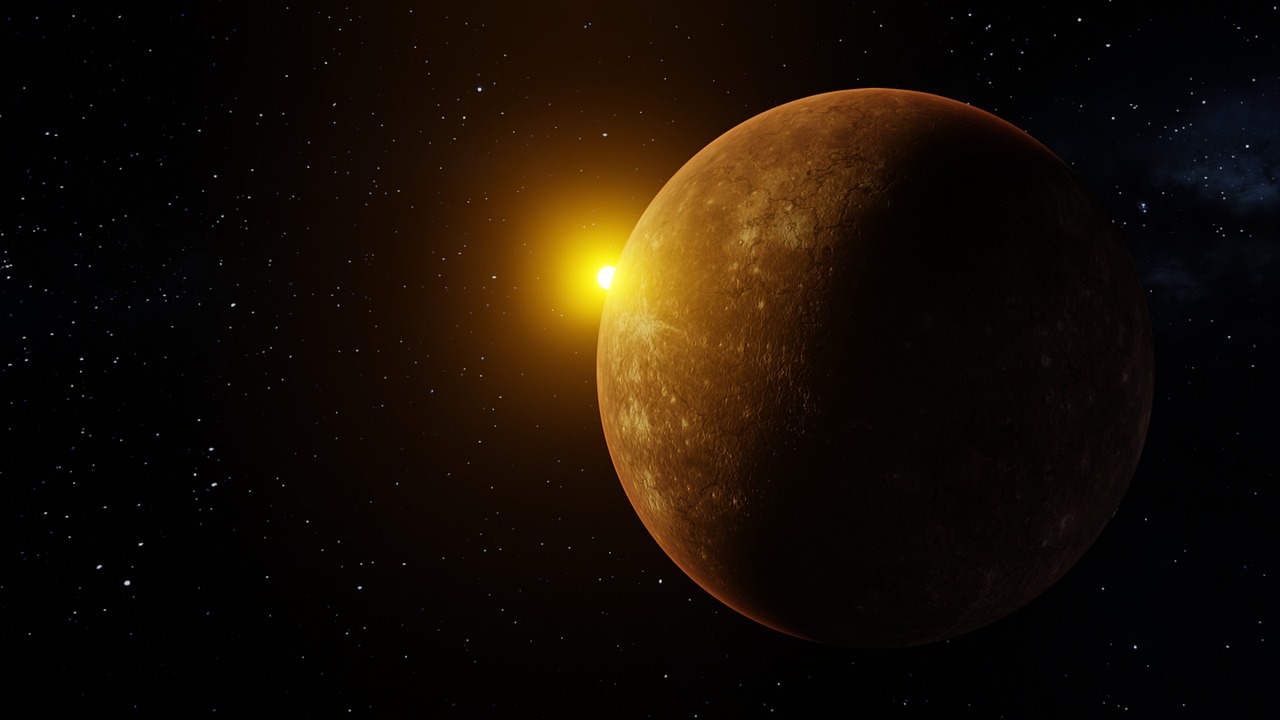
Merkur, the innermost planet of our solar system, is a fascinating object of planetary research. With an average distance of around 58 million kilometers to the sun, it is the sun's night planet and only needs about 88 days for a circulation - the shortest round of all planets. Merkur is also the smallest planet in the solar system, with a diameter of about 4,880 kilometers, which makes it only slightly larger than the earth moon. His proximity to the sun and the resulting extreme conditions make him a unique study object that tells us a lot about the creation and development of rock planets. A detailed overview of Merkur properties can be found Wikipedia, where historical and scientific backgrounds are also illuminated, but these are limited to the planetary context.
From a geological point of view, Merkur is a strongly rugged and crater overpatter Planet, whose surface has similarities to that of the earth moon. The surface is mainly made of silicatic rock and is crossed by numerous impact craters that indicate a long history of meteorite strikes. One of the most striking geological features is the Caloris basin, a huge impact crater with a diameter of around 1,550 kilometers, which was made by a massive impact ago. This crater is so great that it caused geological disorders on the opposite side of the planet, which are known as "chaotic terrain". In addition, Merkur has so -called "shrinkage tears" or "Lobate Scarps", which indicate that the planet has cooled down and contracted in its history, causing the crust. These characteristics indicate a tectonic activity in the past, although Mercury is geologically inactive today.
The atmosphere of Mercury, or rather an exosphere, is extremely thin and mainly consists of traces of oxygen, sodium, hydrogen, helium and potassium. This exospre is so sparse that it can hardly be referred to as an atmosphere in the classic sense; It arises from the sun wind that solves particles from the surface of the planet, as well as by volcanic activities in the past. Due to this thin exospre, there is no significant protection against solar radiation or temperature fluctuations, which leads to the extreme conditions on the surface. In contrast to the earth, where the atmosphere stores and distributes heat, Merkur has no way of compensating for temperatures, which makes its surface a place of opposites.
The temperatures on Mercury are among the most extreme in the solar system. Due to its proximity to the sun and the slow rotation - a Mercury Day lasts about 59 earth days - the sun -facing side heats up to 427 degrees Celsius, hot enough to melt lead. On the turned side or in the permanently shaded craters on the poles, however, the temperatures drop to up to -183 degrees Celsius. These extreme fluctuations are not only due to the lack of atmosphere, but also to the low inclination of Mercury, which hardly causes seasons. Interestingly, room probes such as Messenger have found indications that water ice could exist in the shady craters on the poles, which has reached there through comet strikes and is preserved due to the lack of sunlight.
Merkurs unusual properties also extend to its magnetic field, which is weak, but nevertheless present-a mystery, since the planet should not actually have an active dynamo effect at the core due to its size and cooling. This magnetic field interacts with the sun wind and forms a small magnetosphere, which is not strong enough to completely protect the surface from charged particles. Merkur's research was significantly promoted by missions such as Mariner 10 in the 1970s and Messenger (2004–2015), which provided detailed maps of its surface and data on its composition. The current Mission Bepicolombo, a collaboration between ESA and Jaxa, is intended to provide further insights into the secrets of this planet.
In summary, Merkur is a planet of the extreme, the geological features of which make it a unique study object. Its closeness to the sun and the resulting conditions offer valuable information about the processes that have shaped rock planets in the early history of the solar system. Despite its small size and apparent insignificance compared to the gas giants, Merkur remains a key to understanding the dynamics and evolution of our cosmic home.
Venus
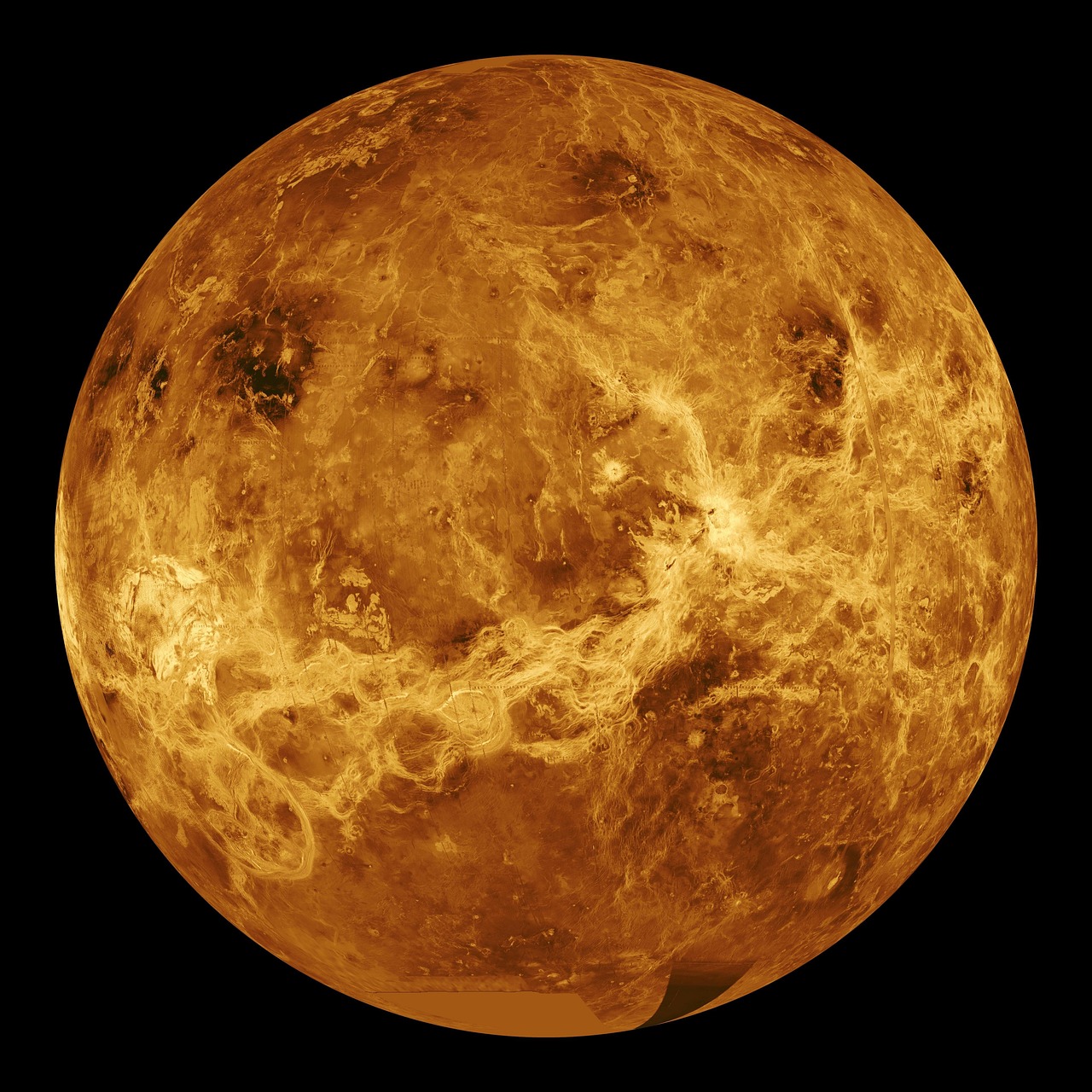
Venus, often referred to as the "sister planet" of the earth, is the second -inital planet of our solar system and the earth in many ways amazingly similar, but also extremely different. With a diameter of around 12,104 kilometers, it is only slightly smaller than the earth and has a comparable mass and density, which indicates a similar inner composition of rock and metal. It circles the sun at an average of 108 million kilometers and needs about 225 earth days. But while the earth is a flowering, life -friendly planet, the Venus prevails that make it one of the most inhospitable places in the solar system. Their dense atmosphere and the extreme surface conditions offer fascinating insights into planetary processes that could also have expired in extreme form on earth.
The atmosphere of Venus is the most outstanding feature of this planet. It is about 96.5% carbon dioxide, with traces of nitrogen and other gases, and is incredibly dense - the air pressure at the surface is about 92 times the pressure at Earth's sea level, comparable to the pressure at about 900 meters deep in the ocean. This extreme density of the atmosphere, compounded by high concentrations of greenhouse gases, results in a runaway greenhouse effect that raises surface temperatures to an average of 462 degrees Celsius - hot enough to melt lead. The density of the atmosphere decreases with altitude, similar to that on Earth, where air pressure halves for every 5,500 meters of altitude Wikipedia is described. But even at higher levels, Venus's atmosphere remains impenetrable and riddled with thick clouds of sulfuric acid that reflect sunlight, making the planet one of the brightest objects in the night sky.
The surface conditions on Venus are extremely hostile due to this atmosphere. The dense clouds prevent the surface from reaching the surface more than a fraction of the sunlight, and the heat is evenly distributed by the greenhouse effect, so that there are hardly any temperature differences between day and night or between equator and Poland. The surface itself, which was mapped by radar measurements of room probes such as Magellan, mainly consists of volcanic levels that cover about 80 % of the planet. There are indications of past and possibly still active volcanic activity, with huge tortoisons such as Maat Mons and extensive lava flows. In addition, Venus has tectonic features, such as cracks and wrinkles, which indicate geological processes, but which are not comparable to the plate movement of the earth. The extreme conditions make it difficult to operate probes on the surface for a long time-the Soviet Venera missions of the 1970s and 1980s survived only a few hours before they succumbed to heat and pressure.
Despite the inhospitable conditions, there are parallels between Venus and Earth that fascinate scientists. Both planets have a similar size, mass and composition, which indicates that they were created under comparable conditions in the early solar system. It is believed that Venus in its early history may have had oceans out of liquid water, similar to the earth before the greenhouse effect got out of control and evaporated the water. This hypothesis makes Venus a warning example of the possible consequences of an uncontrolled climate change on Earth. In addition, Venus rotates backwards compared to most other planets, which means that the sun rises in the west and goes down in the east - a phenomenon that may have been caused by a massive impact or gravitational interactions in its history. A Venus Day also lasts about 243 earth days, longer than a venus year, which makes its rotation the slowest in the solar system.
The research of Venus has provided valuable data in recent decades, but many questions remain open. Missions such as those of NASA (Veritas) and the ESA (Envision), which are scheduled to start in the coming years, aim to better understand the geological processes and atmospheric dynamics. The question is particularly interesting whether microbial life could exist in the upper layers of the atmosphere, where the temperatures are milder - a hypothesis that was heated by the discovery of phosphine, a potential biomarker, even if these results are controversial. Venus thus remains a planet of opposites: on the one hand of the earth, so similar, on the other hand, a place that shows how small the difference between a life -friendly and an hostile planet can be.
Earth
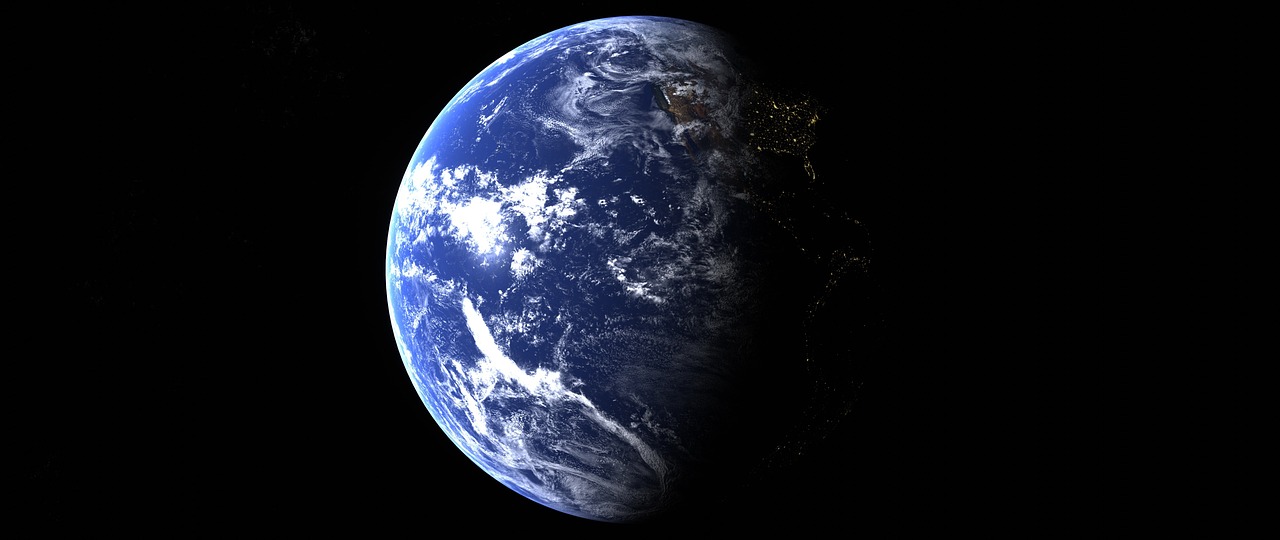
The earth, the third planet from the sun and the only known habitat in the solar system, is a unique celestial body that is characterized by its geological, atmospheric and biological properties. With a diameter of over 12,700 kilometers, it is the fifth largest planet and the densest in the solar system. It circles the sun an average of around 149.6 million kilometers (1 astronomical unit) and needs about 365.256 days. The earth, often referred to as "blue planet", owes this name to the high proportion of water, which covers around 70.7 % of its surface. A comprehensive overview of the physical and geological properties of the earth can be found Wikipedia, where detailed data and historical contexts are available.
Geologically speaking, the earth is a dynamic planet with a complex inner structure, which is divided into earth core, earth mantle and earth crust. The earth core consists of a solid inner and a liquid outer part, mainly of iron and nickel, and creates the magnetic field of the earth, which protects it from harmful sun wind by the geodynamo effect. The earth's coat, which makes up most of the planetary volume, consists of hot, viscous rocks that form the basis for the movement of the tectonic plates. The earth's crust, between 50 and 100 kilometers thick, is divided into continental and oceanic plates, the movement of which causes volcanoes, earthquakes and mountain formation. The surface of the earth is covered by around two thirds of oceans, with the lowest point in the Marianengraben (widen -deep, 11,034 meters below sea level), while the land area comprises seven continents, which make up about 29.3 % of the total area.
The earth's atmosphere is a gaseous shell that enables lives and consists of about 78 % nitrogen, 21 % oxygen and 1 % noble gases as well as traces of other gases. It protects the surface from harmful ultraviolet radiation through the ozone layer and regulates the temperature due to the natural greenhouse effect, which means that the average floor temperature is about 15 degrees Celsius -although the range of -89 degrees Celsius is reaching to +57 degrees Celsius. The atmosphere also enables the formation of clouds and precipitation that drive the water cycle. In contrast to other planets in the solar system, the earth is the only known celestial body with liquid water on the surface, a decisive factor for the development and maintenance of life. Their axis slope of about 23.44 degrees leads to the moon, its natural satellite, stabilizes the earth's axis and causes tides.
The biological diversity of the earth is another outstanding feature that distinguishes it from all other known sky bodies. Life exists in almost all conceivable environments - from the deepest ocean floors to deserts to the highest peaks. The oldest indications of life come from fossils, which are around 3.5 to 3.8 billion years old, and indicate that simple microorganisms were created in an early, water -rich environment. Today biodiversity includes millions of species, individuals to plants to complex animals that interact in a finely coordinated ecological network. This variety is closely linked to the geological and atmospheric conditions: the availability of liquid water, the oxygen atmosphere and the moderate temperature range create ideal conditions for evolution and the survival of life.
The earth is about 4.6 billion years old and emerged from the sun's fog, a cloud of gas and dust, which, after the formation of the sun, condensed to planetesimal and finally planeted. In its early history, the earth was a hot, inhospitable place that was characterized by frequent meteorite strikes and volcanic activity. With the cooling of the surface, oceans formed, and the atmosphere developed from an originally reducing composition into an oxygen -rich environment, mainly through the activity of photosynthetic organisms. This development made the earth a unique habitat, the stability of which is maintained by complex feedback mechanisms between geology, atmosphere and biosphere.
In summary, the earth is an extraordinary planet that stands out through its dynamic geology, life -friendly atmosphere and incomparable biological diversity. It is not only our home, but also a natural laboratory that provides us with insights into the processes that give life. Research on earth - from its inner structure to the complex ecosystems - remains a central task of science in order not only to better understand our planet, but also to identify the conditions that could enable lives on other worlds.
Mars
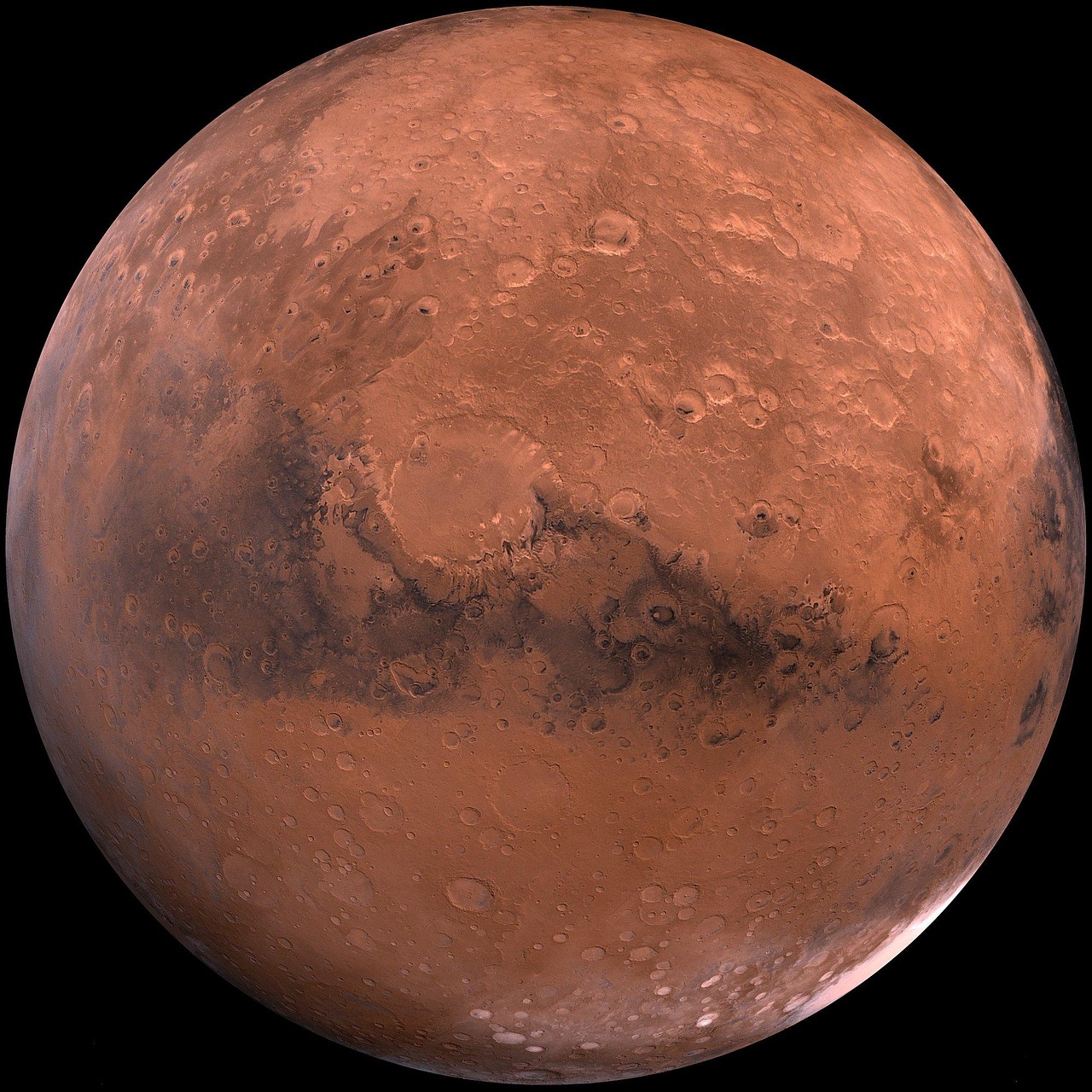
Mars, often referred to as the "red planet", is the fourth planet of the sun and the second smallest in the solar system. With a diameter of about 6,792 kilometers, it is only half the size of the earth and circles the sun at an average distance of around 228 million kilometers, which corresponds to a circulation of around 687 earth days. It owes its characteristic reddish color to the iron oxide (rust) on its surface, which shimmers in sunlight. Mars has always inspired the imagination of humanity, not least because of the possibility that he could have housed life once. Today he is the goal of numerous scientific missions that examine its surface, resources and potential traces of life. An overview of current developments and historical data can be found on various platforms, but without direct relevance to the sources provided such as the American Music Awards Yahoo Entertainment, why the focus here is on scientific knowledge.

The surface of Mars is geologically diverse and shows traces of a dynamic past. It is characterized by huge volcanoes, deep canyons and extensive levels. The Olympus Mons, the highest volcano in the solar system, protrudes about 22 kilometers - almost three times as high as Mount Everest. The Valles Marineris, a huge canyon system, extends over 4,000 kilometers and is up to 11 kilometers deep, which makes it one of the most impressive geological features in the solar system. The surface also has numerous impact crater that indicate a long history of meteorite strikes, as well as indications of previous erosion processes through wind and possibly water. The marble surface is divided into two hemispheres: the northern hemisphere mainly consists of flat levels, while the southern hemisphere is higher and more cratened. These differences indicate different geological developments in the history of the planet.
A central theme of Marsforschung is the search for water resources because water is a key indicator of potential life. Today Mars is a cold, dry desert with a thin atmosphere, which mainly consists of carbon dioxide (95.3 %) and has only about 1 % of the pressure of the earth's atmosphere. Nevertheless, there is convincing evidence that Mars in its early history, about 3.5 to 4 billion years ago, had liquid water on the surface. Dry river beds, deltas and mineral deposits that only arise in aqueous environments were discovered by room probes such as Mars Rover Curiosity. There are large amounts of water ice on the polar caps of the Mars, and there are indications of underground ice cream in medium latitudes. The discovery of frozen water under the surface by the Phoenix mission in 2008 and the observation of seasonal grooves that may arise from saline water are hope that water could still be accessible in any form.
The search for traces of life on Mars is one of the driving forces behind the numerous missions to the red planet. While today's conditions -extreme cold with temperatures between -140 degrees Celsius and +20 degrees Celsius, low air pressure and high radiation -as we know it, live unlikely, scientists focus on the past. In its “Noachische period” (about 4.1 to 3.7 billion years ago), Mars could have had a denser atmosphere and liquid water, which would have made microbial life possible. Rover such as Perseverance, which landed in the Jezero crater in 2021, collect samples of rock and floor, which are examined in traces of organic molecules or fossil microorganisms. The crater in which Perseverance operates was once a lake, and the sediments there could contain indications of previous life. Future missions, such as the planned Mars Sample Return Mission from NASA and ESA, should bring these samples to the earth to analyze them with highly developed instruments.
The atmosphere of Mars offers little protection against solar and cosmic radiation, which sterilizes the surface and complicates the preservation of organic materials. Nevertheless, there are theories that life in underground habitats, protected from radiation, could have survived. Methane, which was sporadically detected in the Mars atmosphere, could be an indication of geological or biological activity, although the source has so far remained unclear. Missions such as ESA's exomars are specifically looking for biosignatures in deeper layers of soil. In addition, the Mars has two small moons, phobos and deimos, which are possibly captured asteroids and also arouse scientific interest, even if they are less relevant for the search for a life.
In summary, Mars is a planet that fascinates us with its geological diversity, indications of previous water and the possibility of past life. It is not only a window in the history of the solar system, but also a test field for future human exploration. The ongoing and planned missions will continue to put light on the secrets of the Red Planet and maybe one day answer the question of whether we ever had neighbors in the solar system.
Jupiter
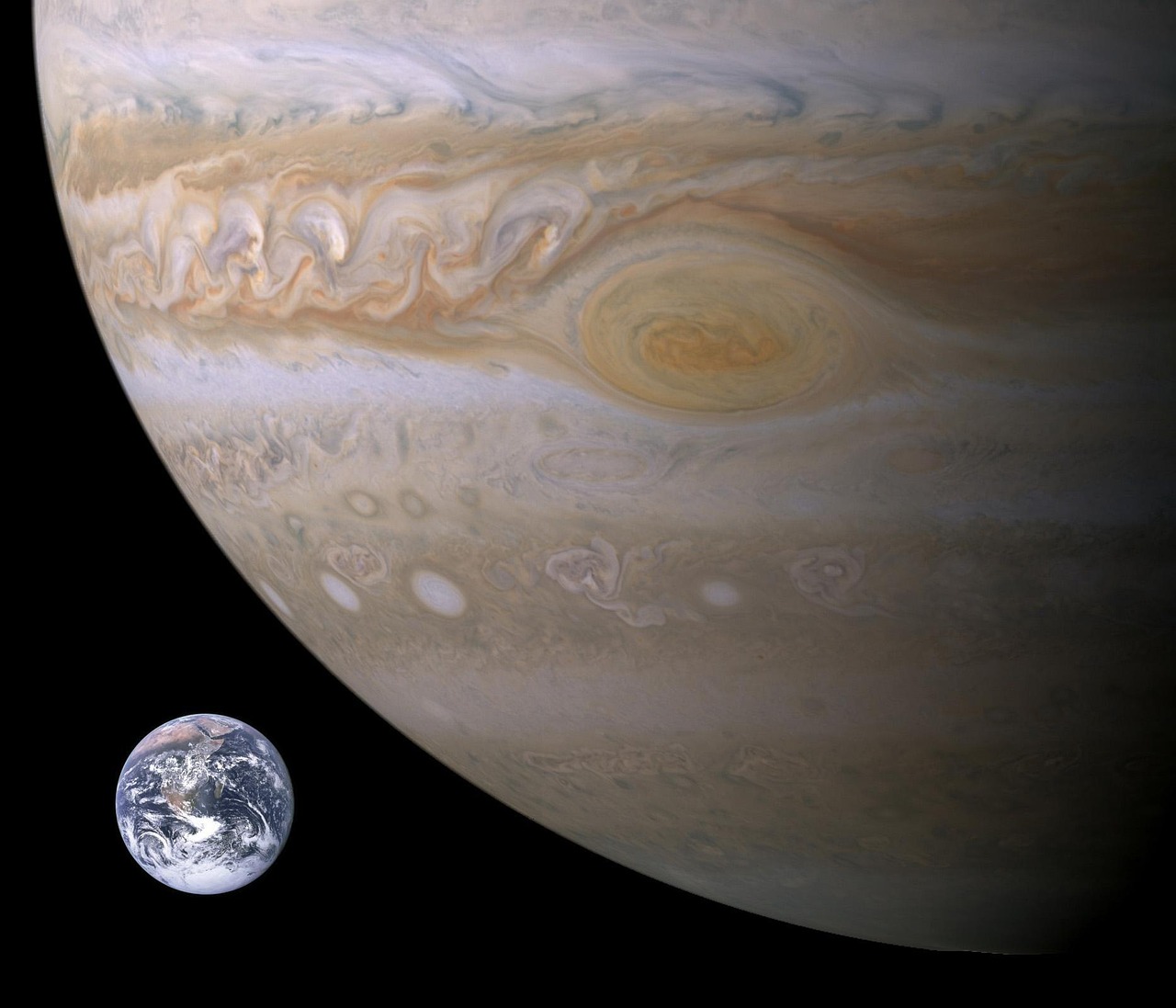
Jupiter, the fifth planet from the sun, is the largest and most massive planet in our solar system, with a mass that surpasses all other planets. With a diameter of around 139,820 kilometers, it is more than eleven times as large as the earth and circles the sun at an average distance of 778 million kilometers, which corresponds to an in -depth time of almost 12 years of the earth. However, Jupiter rotates extremely quickly, with a rotation every 10 hours, which leads to a strong protrusion on the poles. Named after the Roman god of heaven and thunder, Jupiter is one of the brightest objects in the night sky and already visible with a small telescope. Offers a comprehensive overview of its properties and discoveries Britannica where detailed information about its structure and research can be found.
The atmosphere of Jupiter is a complex, dynamic shell that mainly consists of hydrogen (about 90 %) and helium (about 10 %), which resembles its composition of the sun. This gas composition, combined with traces of methane, ammonia and water vapor, gives the planet its characteristic colorful cloud straps, which are created by strong winds and turbulence in the upper atmosphere. The winds can reach speeds of up to 360 km/h and are organized in zones (lighter ligaments) and belts (darker ligaments) that run parallel to the equator. Inside the planet, where the pressure is extremely high, hydrogen exists in a liquid metallic condition, which contributes to Jupiter strong magnetic field - the strongest of all planets in the solar system. This magnetic field creates a huge magnetosphere that is exposed to intensive radio eruptions and appears larger than the moon in the earth sky. Jupiter also radiates more energy than it receives from the sun, which indicates an internal heat source that arises from the slow contraction of the planet.
One of the most well-known features of Jupiter's atmosphere is the Great Red Spot, a gigantic storm that has been observed for at least 400 years. This anticyclonic storm is so large that it could span about two to three Earths, with a current diameter of about 10,000 miles (16,000 kilometers), although it has shrunk in recent decades. The Great Red Spot is located in the Southern Hemisphere and rotates counterclockwise, with winds reaching speeds of up to 270 mph (430 km/h). Its reddish color could arise from chemical reactions of ammonia compounds or organic molecules with ultraviolet radiation, although the exact cause is not yet fully understood. Observations by spacecraft such as Voyager and Juno have shown that the storm extends deep into the atmosphere, possibly up to hundreds of kilometers, providing a window into the planet's complex atmospheric processes.
Jupiter is not only known for his massive body, but also for its extensive system of moons and struggles. The planet currently has 92 well -known moons, of which the four largest - IO, Europe, Ganymed and Kallisto - are referred to as Galilei's moons because they were discovered in 1610 by Galileo Galilei. Ganymed is the largest moon in the solar system, even larger than the Planet Mercury, and has its own magnetic field. Io is geologically the most active celestial body in the solar system, with hundreds of volcanoes that emit sulfur and other materials. Europe is particularly fascinated by scientists, since under its thick layer of ice a global ocean is suspected of liquid water that may offer life -friendly conditions. Kallisto, on the other hand, is very crafted and could also have an underground ocean. This moons, together with Jupiter weak but existing ring system made of dust and small particles, make the planet a miniature sun system within our own.
The research of Jupiter has made enormous progress through numerous space missions. The Pioneer and Voyager missions in the 1970s provided the first detailed images and data, while the Galileo mission (1995–2003) lowered a probe into the atmosphere and circled the planets for years. The Juno mission, which arrived in 2016, has further deepened our understanding of Jupiter's inner structure, magnetic field and atmospheric dynamics. Events such as the collision of the comet Shoemaker-Levy 9 with Jupiter in 1994 also offered unique insights into the composition of the atmosphere and the effects of such strikes. These missions have shown that Jupiter is not just a gas giant, but a complex system that teaches us a lot about the development and development of planets.
In summary, Jupiter is a giant, whose atmosphere, the large red spot and its numerous moons make it one of the most fascinating objects in the solar system. Its size and mass, combined with its internal warmth and its mighty magnetic field, indicate that he could almost have become a star if he had only been a little more massive. The ongoing research of this planet and its moons, especially Europe, could one day provide answers to the question of extraterrestrial life and expand our understanding of the cosmos.
Saturn
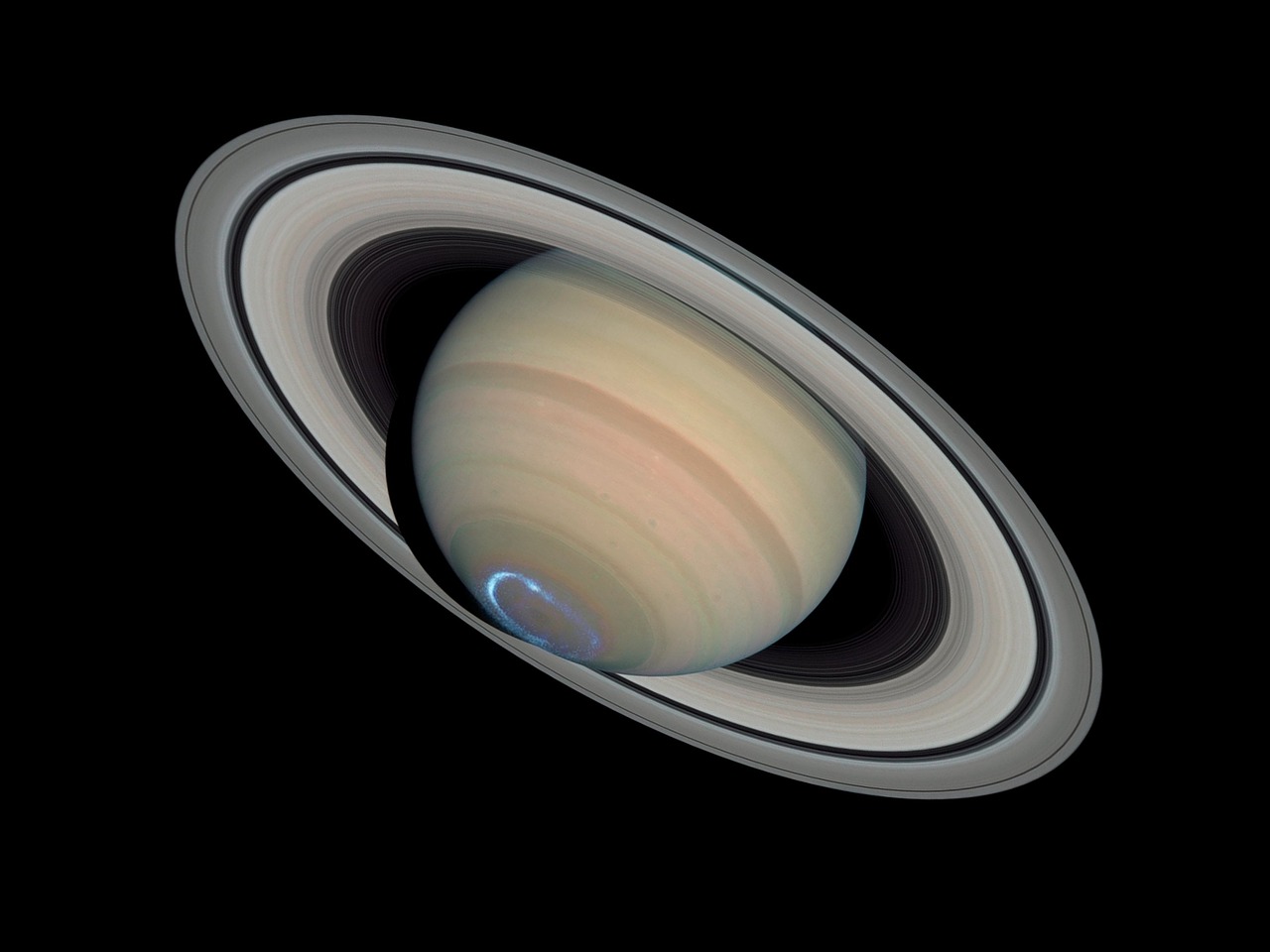
Saturn, the sixth planet from the sun, is the second largest planet in our solar system and known for its breathtaking ring system, which makes it one of the most iconic celestial bodies. With a diameter of around 116,460 kilometers, Saturn is about nine times larger than the earth and circles the sun at an average distance of around 1.43 billion kilometers, which corresponds to an orbit time of around 29.5 earth years. Like Jupiter, Saturn is a gas giant that mainly consists of hydrogen (about 96 %) and helium (about 3 %), with a density that is so low that it could theoretically swim on water. Its quick rotation - a day only lasts about 10.7 hours - leads to a significant slattlement on the poles. A detailed overview of Saturn and its properties can be found on various scientific platforms, while commercial pages such as Saturn.de have no relevance here and only serve as a placeholder for a link.
The most outstanding feature of Saturn is undoubtedly its unique ring system, which consists of thousands of individual rings, which mainly consist of ice particles, chunks of rock and dust. These rings extend over a width of around 282,000 kilometers, but are surprisingly thin, often only a few meters to a maximum of one kilometer thick. They are divided into several main areas, including prominent A, B and C-rings, as well as the weaker D, E, F and G-rings that are separated by gaps such as the cassini division. The rings were probably created by the destruction of one or more moons that were torn by collisions or tidal forces, or by material that could not condense into a moon. The complex structure of the rings is influenced by the gravitative interactions with Saturn's moons, the so -called "shepherd's moons" such as Prometheus and Pandora forms and wave patterns in the rings. Observations of the Cassini mission (2004–2017) have shown that the rings are dynamic and change over time, may even be relatively young, with the age of just a few hundred million years.
The atmosphere of Saturn is similar to that of Jupiter, with colorful cloud bands and storms that are driven by strong winds that can reach speeds of up to 1,800 km/h. A remarkable phenomenon is the hexagonal storm of Saturn's North Pole, a hexagonal cloud structure that has been stable for decades and the cause of which has not yet been fully understood. Similar to Jupiter, Saturn radiates more warmth than he receives from the sun, which indicates internal processes such as the slow contraction of the planet. His magnetic field is weaker than that of Jupiter, but still significant and influences the environment, including the rings and moons. The extreme conditions inside the planet mean that hydrogen merges into a metallic state, similar to Jupiter, which contributes to the generation of the magnetic field.
Saturn currently has over 80 well-known moons, many of which were discovered by the Cassini mission, and the number could still increase with further observations. These moons are extremely diverse, from small, irregularly shaped objects to large, geologically complex worlds. The largest and most fascinating moon is Titan, the second largest moon in the solar system with a diameter of around 5,150 kilometers, larger than the Planet Mercury. Titan is unique because it is the only known world next to the earth that has a dense atmosphere, mainly from nitrogen (about 95 %) and methane. This atmosphere creates a greenhouse effect and leads to a complex weather process with methane rain, rivers and lakes made of liquid methane and ethane on the surface -an analogy to the water cycles of the earth, only at extremely low temperatures of about -179 degrees Celsius. The Huygens probe, which landed on Titan in 2005, provided the first pictures of this strange landscape and showed hills, valleys and dunes made of organic materials.
Other important moons of Saturn are Enceladus, which is known for its geologically active geysers, which fling water and organic molecules from an underground ocean into space, as well as Rhea, Iapetus, Dione and Tethys, which each have unique surface features. Iapetus is particularly noticeable due to its two -tone character, with a light and an extremely dark hemisphere, while Enceladus is considered a candidate for extraterrestrial life due to its potential underground ocean. These moons interact gravatively with the rings and the planet itself, which makes the Saturn system a dynamic and complex miniature sun system.
In summary, Saturn is a planet of incomparable beauty and scientific interest, whose ring system and diverse moons make it one of the most fascinating objects in the solar system. The detailed observations of the Cassini mission have revolutionized our understanding of Saturn and in particular by Titan by showing how complex and diverse the processes in this system are. Saturn remains a key to researching the development of gas giants and the possibility of life in inhospitable environments beyond the earth.
Uranus

Uranus, the seventh planet from the sun, is a fascinating ice giant that is characterized by its unusual properties and its remote position in the solar system. With an average removal of around 2.87 billion kilometers (19.2 astronomical units) to the sun, Uranus needs about 84 years of the earth for a circulation. Its diameter is around 50,724 kilometers, which makes it about four times larger than the earth, and its mass corresponds to the 14.5-time of the earth mass. Uranus was discovered on March 13, 1781 by William Herschel, who initially thought he was a comet, and he was named after the Greek sky god Ouranos. A detailed overview of its physical and orbital properties can be found Wikipedia where comprehensive information on the history and research of the planet is provided.
One of the most striking properties of Uranus is its extreme axis tendency of around 97.77 degrees that practically lets it rotate "lying on the side" - a phenomenon that does not occur in any other planet in the solar system in this form. This unusual tendency, which leads to a declining rotation (from west to the east), means that the poles of the planet alternately receive sunlight for 42 years, while the other side is in the dark. This leads to extreme seasonal variations that influence the atmosphere and the appearance of the planet over long periods of time. The cause of this inclination is not fully clarified, but is often attributed to a massive impact of a large celestial body in the early history of the planet. The rotation of Uranus takes about 17 hours and 14 minutes, which is relatively fast compared to other gas giants.
The atmosphere of Uranus mainly consists of hydrogen (about 83 %) and helium (about 15 %), with a small proportion of methane (about 2 %), which gives the planet its characteristic pale blue color, since methane absorbs red light. Uranus is the coldest planet in the solar system, with temperatures on tropopause, which can drop up to 49 Kelvin (-224 degrees Celsius). The atmosphere has a complex layer structure, with clouds made of water, ammonia and methane, which are powered by strong winds, the speeds of up to 900 km/h. In contrast to Jupiter and Saturn, the atmospheric characteristics of Uranus are less pronounced, which is due to a thick layer of dust that dampens the appearance of the planet. Nevertheless, storms were observed, such as a thunderstorm in 2004, which was called the "Fourth of July Fireworks". Inside the planet there is a rocky core surrounded by an icy coat of water, ammonia and methane, as well as a thick external layer of gases.
The magnetic field of Uranus is also unusual because it is inclined by about 59 degrees compared to the rotary axis and is not moved from the center of the planet, but is moved towards the southern pole. This asymmetry leads to a complex magnetosphere that is filled with charged particles such as protons and electrons. The extreme axis tendency also affects the interactions of the magnetic field with the sunwind, which leads to unique phenomena that are not yet fully understood. In addition, Uranus has 13 well -known rings that consist of dark particles and are thin and difficult to see compared to Saturns, as well as 28 natural satellites, including the five large moons Miranda, Ariel, Umbriel, Titania and Oberon, who are named after figures from works by Shakespeare and Alexander Pope.
The research of Uranus is limited compared to other planets, since it has so far only been visited by a single spacecraft: Voyager 2, which flew past Uranus in January 1986. This mission provided the first detailed images of the planet, its rings and moons and revealed the extreme inclination of axis and the unusual structure of the magnetic field. Voyager 2 also discovered ten new moons and two other rings that were previously unknown. The mission's data showed that Uranus has a far less active atmosphere than Jupiter or Saturn, which makes it difficult to explore its dynamics. Since then, no further spacecraft have been sent to Uranus, although observations with earth-bound telescopes and the Hubble world space telescope are continued. There are suggestions for future missions, such as an Uranus Orbiter and a probe that could start in the coming decades to further decipher the secrets of this ice giant.
In summary, Uranus is a planet of the extreme and puzzles, the unusual inclination of which make it a unique study object. His remote position and limited research make it one of the least understood planets in the solar system, but it is precisely these properties that arouse the interest of the scientists. Future missions could significantly expand our understanding of Uranus and the processes that form the ice giant, and throw light into the history of the outer regions of our solar system.
Neptune
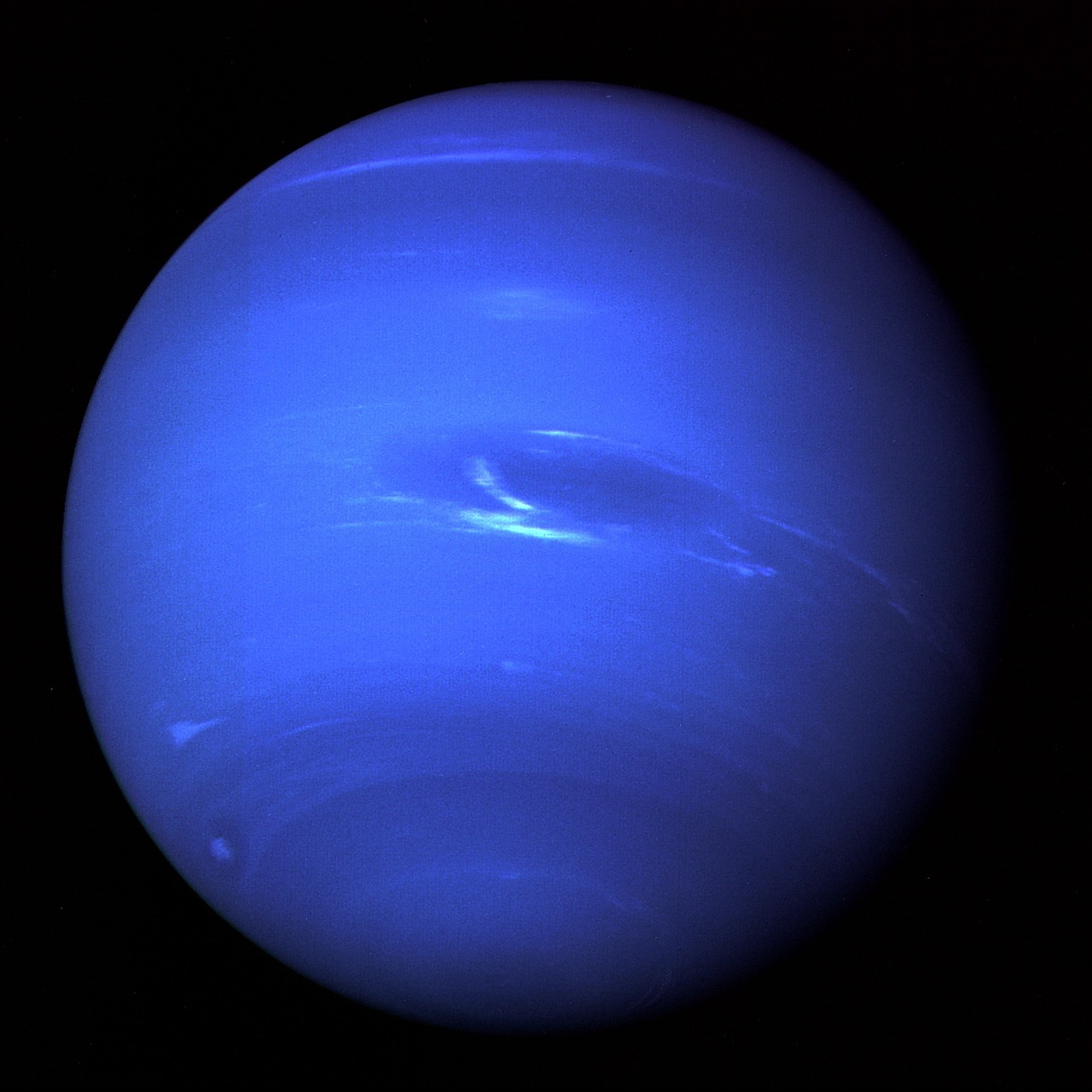
Neptune, the eighth and distant planet in our solar system, is a mysterious ice giant that frees the sun at an average distance of around 4.5 billion kilometers (30.1 astronomical units). With a circulation time of around 165 earth years, Neptune is the planet with the longest rail period, which underlines its remote position. Its diameter is about 49,244 kilometers, which makes it a little smaller than uranium, but still about four times larger than the earth. Named after the Roman god of the sea, Neptune was not discovered by direct observation, but by mathematical calculations, as Urbain Le Verrier and John Couch Adams in 1846 analyzed irregularities on the train of Uranus. A detailed overview of Neptun's properties can be found on various scientific platforms, while thematically inappropriate sources such as Weather.com only serve as a placeholder for a link and refer to earthly weather phenomena.
Neptune's atmosphere is stormy and dynamic, making it one of the windiest planets in the solar system. It consists mostly of hydrogen (about 80%) and helium (about 19%), with trace amounts of methane (about 1.5%), which gives the planet its deep blue color because methane absorbs red light. Temperatures in the upper atmosphere drop to around 55 Kelvin (-218 degrees Celsius), making Neptune one of the coldest places in the solar system. Particularly noteworthy are the extreme winds, which can reach speeds of up to 2,100 km/h - the highest in the solar system. These winds drive complex weather patterns, including storms and cloud bands that change rapidly. One of the most famous storms, the Great Dark Spot, was observed by the Voyager 2 mission in 1989. This anticyclonic storm was about the size of Earth, but disappeared in later observations while new storms formed, indicating the dynamic nature of the atmosphere.
Inside Neptune there is a small rocky core surrounded by a thick coat made of water, ammonia and methane in icy or liquid form, which brings him the status of an ice giant. The gaseous atmosphere lies above this coat, which merges seamlessly into the coat, since Neptune does not have a fixed surface. Despite its great distance from the sun, Neptune radiates more warmth than he receives, which indicates internal processes such as the slow contraction of the planet or residual heat from its time. This internal warmth could also drive the stormy atmosphere. Neptune also has a strong magnetic field that is inclined about 27 degrees compared to its rotary axis and does not emerge from the center of the planet, which leads to an asymmetrical magnetosphere that interacts with the sun wind.
The discovery and research of the moons of Neptune is closely associated with the history of the planet itself and the technological advances of astronomy. At the moment, 14 moons are known, of which Triton is the largest and most important. Triton, who was identified by William Lassell in 1846 just a few weeks after the discovery of Neptune, has a diameter of around 2,700 kilometers and is the seventh largest moon in the solar system. He is geologically active, with geysers that emit nitrogen and dust and has a thin atmosphere of nitrogen and methane. It is noteworthy that Triton has a retrograde orbit, which indicates that it was not created with Neptune, but could be a captured celestial body out of the Kuiper belt. Other important moons are Nereid, Proteus and Larissa, but most of them were only discovered by the Voyager 2 mission in 1989, which identified a total of six new moons. These moons are often small and irregularly shaped, which indicates a chaotic history of origin.
The research of Neptune is extremely limited due to its enormous distance from the earth. The only mission that has visited the planet was Voyager 2, who flew past Neptune on August 25, 1989. This mission provided the first detailed pictures of the planet, its atmosphere, rings and moons. Voyager 2 discovered the large dark spot as well as four weak, dark rings that consist of dust and small particles and are hardly visible compared to Saturn's rings. Since then, no further spacecraft have been sent to Neptune, and the observations are limited to earth-bound telescopes and the Hubble world space telescope, which have documented changes in the atmosphere and new storms. Proposals for future missions, such as a Neptune orbiter, have not yet been implemented due to the high costs and the long travel time (around 12–15 years).
In summary, Neptune is a planet of the extreme, whose stormy atmosphere, internal warmth and fascinating moons like Triton make him a unique study object. His remote position and limited research leaves many questions open, in particular about the dynamics of his atmosphere and the history of his moons. Neptune remains a symbol of the limits of our solar system and the challenges associated with researching the external planets, while at the same time arousing the curiosity of the scientists who are looking for answers to the secrets of the cosmos.
Small planet and asteroids
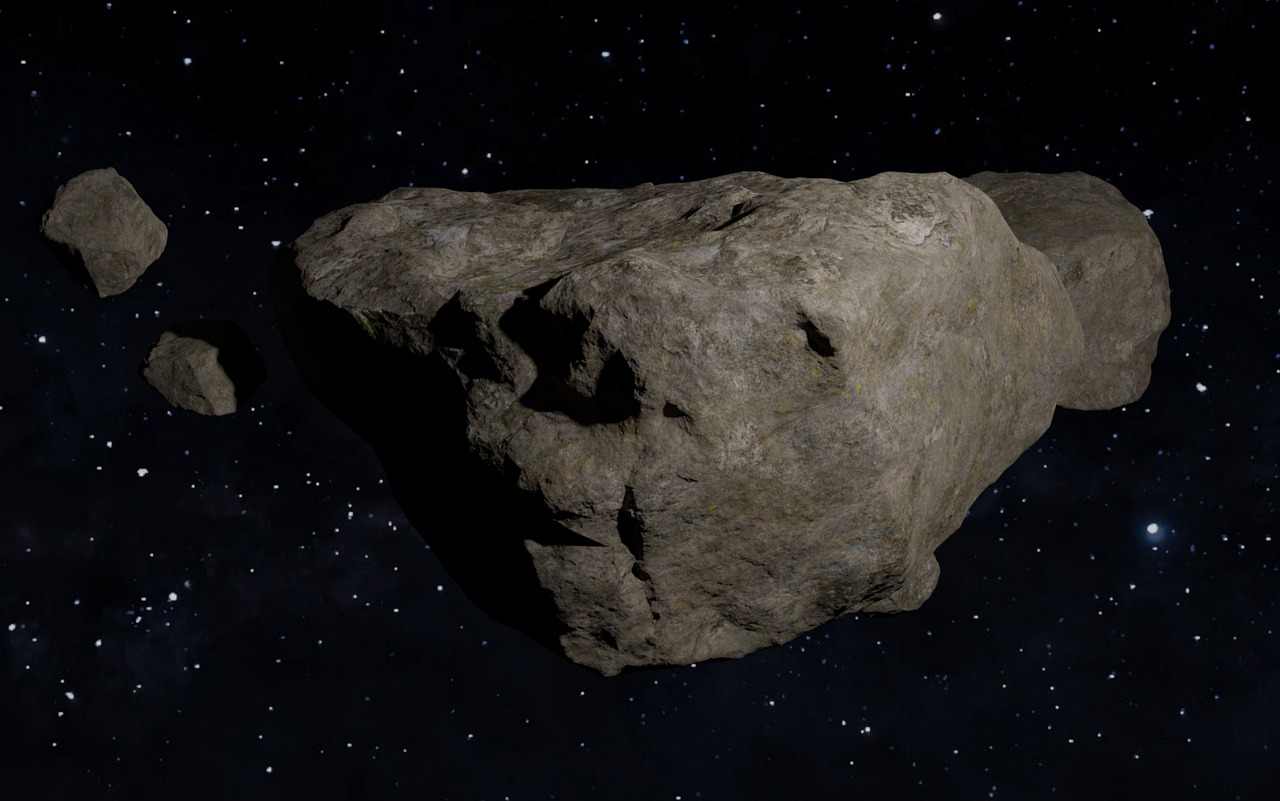
In addition to the eight large planets, our solar system houses a variety of smaller bodies that play a crucial role in planetary science. These objects, which include small planets, comets, meteoroids and dwarf planets, are remains from the time of the solar system was created about 4.6 billion years ago and offer valuable insights into the processes that led to the formation of the planets. They move around the sun on orbits, but do not fulfill the criteria to be classified as a full planet, such as the complete rooms of your track from other objects. A comprehensive overview of this fascinating celestial body and their classification can be found Wikipedia where detailed information about your discovery and meaning are provided.
Small planets, also known as asteroids or planetoids, are one of the largest groups of these smaller bodies. They include a wide range of objects located in various regions of the solar system, including the asteroid belt between Mars and Jupiter, which contains millions of boulders. The first discovered Kleinplanet was Ceres in 1801, which is now classified as a dwarf planet because it has achieved a hydrostatic balance and has an almost spherical shape. Other categories of small planets include asteroids that are close to the earth (such as aten, amor and Apollo), planeted trojans (e.g. Jupiter-Trojaner), centaur (between Jupiter and Neptune) and transneptunic objects in the Kuiper belt beyond Neptune. By 2019, over 794,000 orbits were determined by small planets, which underlines their enormous number and diversity. These objects usually consist of rock, metal or a mixture of both and varies in size of a few meters to hundreds of kilometers.
Dwarf planets are a special sub -group of small planets, which are defined by their spherical shape and their inability to completely clear their orbit from other objects. Since the introduction of this classification by the International Astronomical Union (IAU) in 2006, objects such as Pluto, Eris, Haumea, Makemake and Ceres have been part of this. Pluto, once viewed as a ninth planet, was downgraded to the dwarf planet and is the best known object in the Kuiper belt, a region beyond Neptune, which contains countless icy bodies. These dwarf planets are of particular interest because they combine properties of planets and small planets and provide information about the dynamics of origin in the outer regions of the solar system.
Comets are another important group of smaller bodies, which are often referred to as "dirty snowballs" because they consist of ice, dust and rock. They mostly come from Oort’s cloud, a hypothetical, spherical shell far beyond the Kuiper belt, or from the Kuiper belt itself. When comets approach the sun, they warm up, and the ice is sublimated, thereby a coma (a gaseous cover) and often a tail that is shaped by the sun wind. Famous comets like Halley, who returns every 76 years, have fascinated humanity for centuries. Comets are important for planetary science, since they contain the original material from the time of the solar system and possibly water and organic molecules could have brought to Earth, which could have contributed to the development of life.
Meteoroids are smaller rock or metal fragments, often the remains of asteroids or comets that drive through the solar system. When you enter the earth's atmosphere, they usually burn up as a meteor (starter taster), while larger specimens can reach the ground than meteorites. These objects are invaluable for science, since they provide direct rehearsals of extraterrestrial material that can be examined for the composition and history of the solar system. Famous meteorite strikes, such as the one about 65 million years ago, which probably led to the extinction of the dinosaurs, also show the potential effects of such bodies on planets.
The origin of this smaller body lies in the early phases of the formation of the solar system, when not all materials were condensed into large planets from the protoplanetary disc. They are the remains of planetesimal, which were fragmented by collisions, gravitational disorders or other processes. Their importance for planetary science is enormous: they serve as time capsules that preserve information about the chemical composition and the physical conditions of early solar system history. Missions such as the Ceres (DAWN) or comets such as 67p/Churyumov-Gerasimenko (Rosetta) have shown how diverse these objects are and how much they can reveal about the origin and development of the planets. Researching these smaller body also helps to evaluate potential dangers from near -earth asteroids and to develop strategies for their defense.
Comet and their role
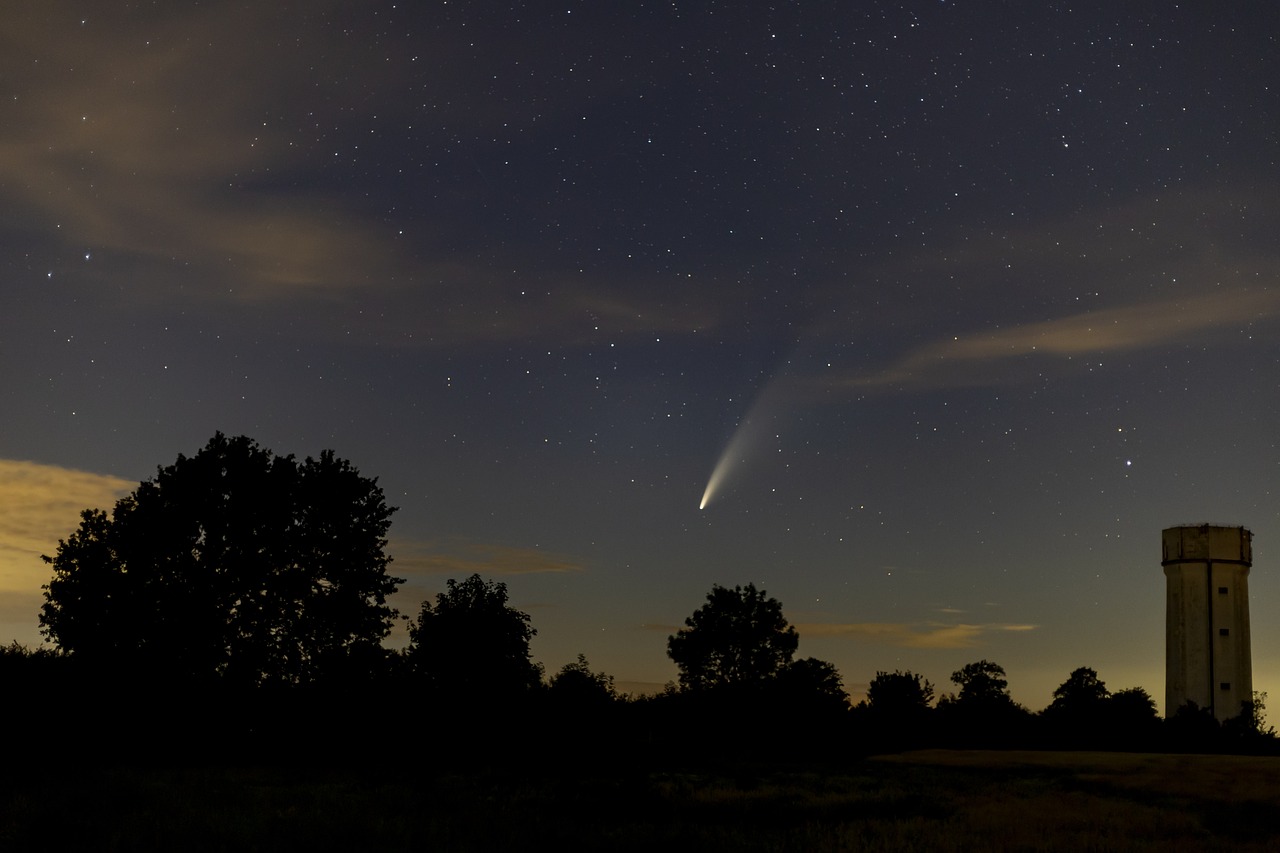
Comets are fascinating, small celestial bodies in the solar system, which are often referred to as "dirty snowballs" and consist of ice, dust and rock. These objects move around the sun on high elliptical lanes, with all -round times that can range from a few years to millions of years. When you approach the sun, warm up and the ice is sublimated - it goes directly from the firm into the gaseous state - which creates a characteristic coma (a gaseous shell) and often a tail that consists of dust and ionized gases. Comets are not only impressive symptoms of heaven, but also valuable time capsules that contain information about the early development of the solar system. A comprehensive overview of their properties and meaning can be found Wikipedia where detailed data are provided for your composition and research.
The composition of a comet is diverse and reflects the conditions under which he was created billions of years ago. The core, which typically has a diameter of 1 to 50 kilometers, consists of a mixture of water ice cream, frozen carbon dioxide, methane, ammonia as well as rock and dust particles. These nuclei often have a very low albedo, which means that they appear dark and only reflect a little sunlight. When a comet approaches the sun, the coma that surrounds the core can reach a diameter of up to 1 million kilometers-about 15 times the size of the earth. The tail, which forms through the sun wind and the movement of the comet, can become over 150 million kilometers long and consists of two main types: a dust tail that curved along the track of the comet, and an ion tail that shows directly from the sun. Unevenness in the warming of the core can also cause jets from gas and dust that create spectacular outbreaks.
Comets are divided into two main categories after their round of time: short -period comets that need less than 200 years to circumnavigate the sun and mostly come from the Kuiper belt, as well as long -period comets, the orbit times of which are thousands of to millions of years and which are probably from Oort’s cloud, a hypothetical, spherical cover far beyond the Kuipertel. Famous examples are the Komet Halley, which returns every 76 years and has been observed since ancient times, as well as the Komet Hale-Bopp, which attracted attention worldwide in 1997 with its impressive tail. There are also so -called hyperbolic comets that only move through the inner solar system before they are thrown into the interstellar room, as well as "extinct" comets that have lost their fleeting materials and resemble asteroids. Around 4,584 comets were known until November 2021, although estimates assume that Oort’s cloud could contain up to a trillion of such objects.
The importance of comets for understanding the early evolution of the solar system is enormous. They are remnants of the time when planets formed from the protoplanetary disk and contain primordial material that has remained virtually unchanged for billions of years. Their composition provides insight into the chemical conditions of the young sun and the outer regions of the solar system where they formed. In particular, the organic compounds, including amino acids, detected in comets suggest that they may have played a role in the emergence of life on Earth by bringing water and organic molecules to our planet through impacts. This hypothesis, known as panspermia, is supported by findings such as that of comet 67P/Churyumov-Gerasimenko, studied by ESA's Rosetta mission, which contained complex organic molecules.
The research of comets has made enormous progress through room probes in recent decades. Missions such as Giotto (for examining the comet Halley 1986), Deep Impact (to examine the comet temple 1 by a targeted 2005 impact) and Rosetta (which landed on the comet 67p in 2014) provided detailed data about the structure, composition and activity of comet. Rosetta’s Lander Philae delivered the first close -ups of a comet seed and showed a porous, dusty surface with organic materials. These missions have confirmed that comets are not only simple chunks of ice, but also complex objects whose activity is controlled by the proximity to the sun. In addition, historical observations that go back to ancient times have shown that comets were often associated with significant events, which underlines their cultural and scientific relevance.
In summary, comets are unique messengers from the early days of the solar system, the composition and behavior of which help us understand the conditions under which planets and possibly life developed. Their highly elliptical lanes and spectacular phenomena make them fascinating study objects, while their research by modern spatial probes expands our knowledge of the chemical evolution of the cosmos. Comets remain a key to understanding the past of our solar system and could provide answers to the question of how the building blocks of life came to earth.
Future explorations
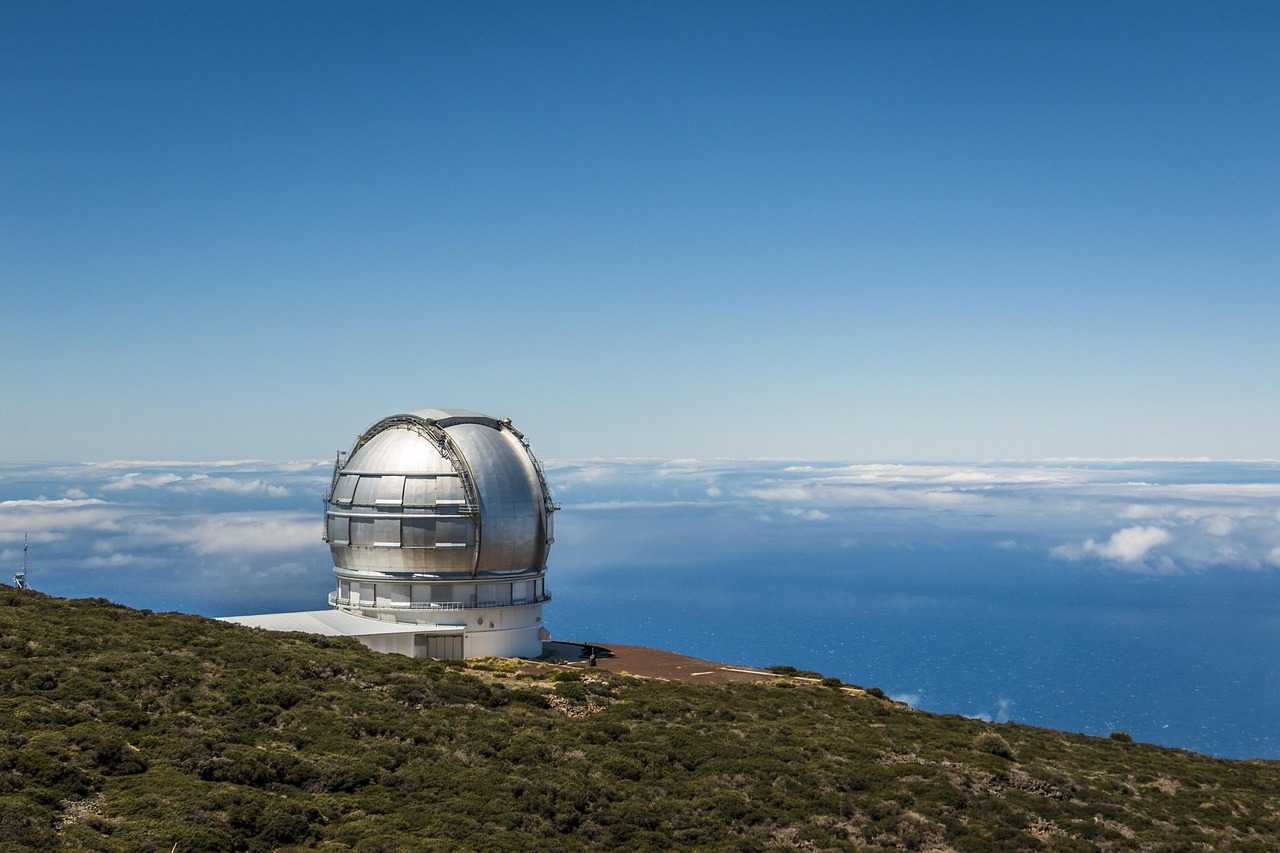
Researching the solar system stands on the threshold of a new era, shaped by ambitious planned missions and groundbreaking technologies, which are intended to expand our understanding of the planets and other celestial bodies. Space day centers such as NASA, ESA, Jaxa and others work on projects that not only provide scientific knowledge, but also create the basis for future human exploration and even space tourism. These missions aim to decipher the secrets of the planets, moons and smaller bodies in the solar system, while technological innovations improve the efficiency and reach of these activities. A detailed overview of some of the most exciting planned missions for the coming years can be found Dirobot where the goals and progress of space research are comprehensively presented.
A central project is NASA's Artemis program, which aims to bring humanity back to the moon and to build a sustainable presence there. After the successful unmanned test flight from Artemis I, Artemis II is planned for 2024 or 2025, in which a manned mission will fly around the moon without landing. This mission will be crucial to test systems for future moon landings, and serves as preparation for Artemis III, which should enable the first manned moon landing for over 50 years. In the long term, NASA plans to build the Lunar Gateway, a space station in the lunar orbit, which will serve as the basis for further explorations, including missions for Mars. These efforts aim to not only understand the moon better, but also to develop technologies for the exploration of other planets.
Mars remains a major focus of space exploration, with several missions planned to deepen our knowledge of the Red Planet. The Mars Sample Return mission, a collaboration between NASA and ESA, is one of the most ambitious projects. It aims to return samples collected by the Perseverance rover to Earth to analyze them for signs of life, geological composition and atmospheric history. This mission could provide crucial clues about whether Mars once harbored life. In parallel, ESA is planning the ExoMars rover mission, which will use a special drill to search for microbial signs of life in deeper layers of soil. These missions will not only improve our understanding of Mars, but also test technologies for future human missions planned in the 2030s.
The external planets and their moons are also the focus of future explorations. The NASA mission Europa Clipper, whose start is planned for the end of 2024, will examine the Jupitermond Europe, which could accommodate a global ocean under its ice crust. The aim is to analyze the composition of this ocean and possible signs of life, which makes Europe one of the most promising candidates for extraterrestrial life. The ESA also plans the Juice mission (Jupiter Icy Moons Explorer), which started in 2023 and will examine the Monde Ganymed, Kallisto and Europe in the 2030s to learn more about their geological and potentially habitable properties. For the further distant ice giants Uranus and Neptune, there are suggestions for orbiter missions in the coming decades, since these planets have hardly been researched since the Voyager advance flights in the 1980s.
Technological advances play a crucial role in making these missions possible. Reusable rockets, as developed by SpaceX with the Starship, reduce the costs for space starts significantly and make more frequent missions possible. Starship itself is to carry out the first orbital flights with private passengers in 2025, which drives space tourism and at the same time provides data on the effects of space flight on the human body. Artificial intelligence (AI) is increasingly integrated into room probes in order to enable autonomous decisions and increase the efficiency of missions, especially for long communication delays. Advances in drive systems, such as ion -based or nuclear drives, could drastically shorten travel times to external planets, while improved communication technologies enable almost immediate data transmission from the deep space.
In summary, researching the solar system faces an exciting future, in which international collaborations, technological innovations and new missions will significantly expand our understanding of the planets and their moons. From the moon to Mars to the icy worlds of the outer solar system, these projects aim to answer basic questions about the development, development and potential habitability of these celestial bodies. At the same time, developments in space tourism and in technology open the door to the broader participation of humanity in the exploration of the cosmos, which increasingly moves the limits of the possible.
Sources
- https://www.planet-schule.de/mm/die-erde/Barrierefrei/pages/Was_ist_unser_Sonnensystem_und_wie_ist_es_entstanden.html
- https://de.wikipedia.org/wiki/Sonnensystem
- https://en.wikipedia.org/wiki/Sonne_(Rammstein_song)
- http://www.franz-ploetz.de/planetenweg/sonne/
- https://en.wikipedia.org/wiki/Merkur
- https://merkur-razors.com/?lang=en
- https://de.wikipedia.org/wiki/Luftdichte
- https://studyflix.de/chemie/luftdichte-3009
- https://de.m.wikipedia.org/wiki/Erde
- https://miro.com/blog/entity-relationship-diagram/
- https://www.yahoo.com/entertainment/articles/amas-2025-see-complete-american-001523286.html?fr=sycsrp_catchall
- https://www.yahoo.com/entertainment/articles/american-music-awards-winners-list-002252187.html?fr=sycsrp_catchall
- https://www.britannica.com/place/Jupiter-planet
- https://en.m.wikipedia.org/wiki/Atmosphere
- https://www.saturn.de/
- https://de.wikipedia.org/wiki/Topologie_(Rechnernetz)
- https://en.wikipedia.org/wiki/Uranus
- https://solarstory.net/planets/uranus
- https://weather.com/de-DE/wissen/wetterphaenomene/news/2025-01-22-sturme-darum-ist-die-atmosphare-gerade-so-explosiv
- https://www.eskp.de/grundlagen/naturgefahren/stuerme-935340/
- https://de.wikipedia.org/wiki/Kleinplanet
- https://www.ardalpha.de/wissen/weltall/astronomie/sterngucker/planeten-sonnensystem-innere-aeussere-umlaufbahnen-kometen-100.html
- https://en.wikipedia.org/wiki/Comet
- https://nl.wikipedia.org/wiki/Komeet
- https://dirobots.com/de/weltraummissionen-2025/
- https://www.tagesschau.de/wissen/forschung/raumfahrt-2024-100.html

 Suche
Suche
 Mein Konto
Mein Konto
